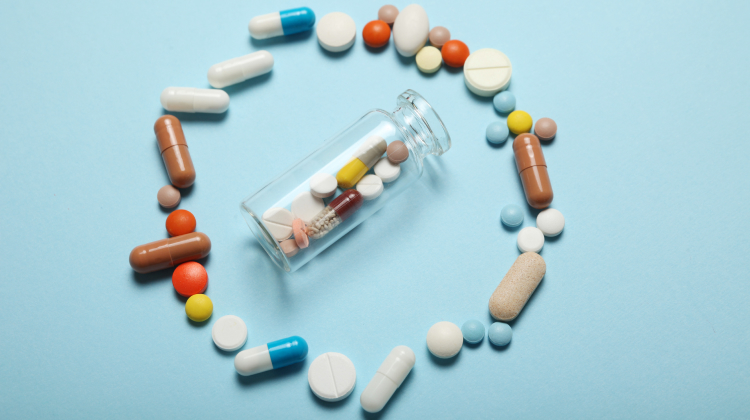How Does Depression Affect The Brain 2024? What Happens?

Depression[1] and major depressive disorder are significant health concerns in the US. According to the National Institute of Mental Health[2] in 2020, depression affected 14.8 million US adults and 4.1 million adolescents.
Depression is characterized by low mood, little interest in daily activities, and even suicidal thoughts.
As we learn more about what causes depression, it is clear that physical changes to the brain are part of the disease. Decreases in gray matter volume, increased brain inflammation, and changes in brain connectivity are common in those with untreated major depressive disorder.
That may sound scary, but many treatment options exist that can prevent and even restore some of these changes back to normal.
Read on to know more about the effect of depression on the brain and several treatments.
How Does Depression Affect Your Brain?
- Loss Of Gray Matter Volume: In adults with major depressive disorder, a reduction in the volume of gray matter has been shown in those with persistent and long-term symptoms.
- Inflammation: Brain inflammation appears to play a role in depression, which makes sense since cortisol is produced in the adrenal glands to deal with the stress of inflammation.
- Impeded Neurotransmitter Pathways: Research suggests that depression is likely a widespread issue of dysfunction in connectivity between neurons.
Effects Of Depression On The Brain
The brain is a dynamic organ that changes in response to the external and internal environment. This is referred to as brain plasticity.
The brain is comprised of neurons, or nerve cells, where chemical and electrical signals are received from the central and peripheral nervous systems. Neurons interpret the information received and relay messages back to other areas of the body.
The inner parts of the brain – the limbic system[3] – are responsible for fundamental functions that control personality, mood, memory, cognitive function, and much more.
Neurotransmitters are the chemical messengers between the neurons. New connections are being created among different sets of neurons all the time and messages are sent on these neuropathways.
The general understanding of the brain and depression is a connectivity problem between areas and systems of the brain. As well as ratio imbalances among the neurotransmitters.
Improper messaging, a result of these imbalances, can cause negative emotions, ruminations, and even physical symptoms.
What we don’t know is exactly what part of the brain depression affects. Therefore, treatment limitations exist, especially for those with persistent or lifelong major depressive disorder.
It is hypothesized that the reduced function of the neurotransmitters serotonin, dopamine, and norepinephrine are potentially the major cause of depression. This can result from underproduction of them or their dysfunction. Regardless, the persistence of the problem changes the brain[4].
Loss of Gray Matter Volume
Gray matter is made up of neurons and other brain cells and is about 40% of your total brain volume.
In adults with major depressive disorder, a reduction in the volume of gray matter has been shown in those with persistent and long-term symptoms. Essentially, brain cell death and brain shrinkage[5] occur.
Magnetic Resonance Imaging (MRI) studies can compare the volume of different areas of the brain. MRI studies have consistently found reduced brain volume, especially in those with persistent and long-term depression symptoms. A 2009 review[6] linked longer depressive symptoms with greater volume reduction.
The hippocampus and amygdala are the most well-recognized structures in the limbic system. Depression and amygdala structure have been a focus of depression research due to their role in emotion regulation.
It appears that longitudinal brain volume changes are most often concentrated in the hippocampus, amygdala[7], thalamus, frontal cortex, and prefrontal cortex areas of the brain.
A recent 2020 meta-analysis[8] of 112 studies found decreased overall gray matter volume in those with major depression, especially in the hippocampus.
The degree of volume loss appears[7] to be affected by the progression and severity of the disease. Lower volumes were associated with the incidence of depression later in life or for those who have experienced more than one depressive episode.
This leads some to consider cortisol[9], the stress hormone, may become toxic to neurons when elevated for prolonged periods.
Conversely, adults with anxiety disorders and depression appear to experience an increase in amygdala size. This suggests potential pathology differences between depression and anxiety for future treatments.
Inflammation
Brain inflammation appears to play a role in depression, which makes sense since cortisol is produced in the adrenal glands to deal with the stress of inflammation.
It is hypothesized that increased stress hormone levels (cortisol) and an activated immune system lead to the overactivation of certain areas of the brain and a resulting state of inflammation. This leads to depressive symptoms when the inflammation continues indefinitely.
A 2022 review[10] concluded that stress and the resulting inflammation could be considered the main pathway for the development of depression.
Therefore, inflammation may be a physical change that happens in the brain before depression even develops and can be considered a common marker of depression.
Some research has also suggested brain inflammation could, in part, be a result of changes in gut health[10]. Changes in gut microbiology result in systemic inflammation and thus extend to inflammation in the brain.
We are only now learning the importance of the gut microbiome and that we live with our bacteria in a synergistic relationship.
There are likely several contributors[11] to the inflammation seen in patients with depression– infection, microbiome changes, medical illnesses, chronic stress, and other factors. The role of inflammation will continue to be a focus area for preventing and treating depression in the future.
Impeded Neurotransmitter Pathways
Brain connectivity, or how different areas of the brain communicate, has been a focus of the effects of depression on the brain. Research suggests that depression is likely a widespread issue of dysfunction in connectivity[12] between neurons.
In some systems, it may be an issue of hyperactivity or in others, it is decreased activity that leads to major depression. Overall, impaired signaling is likely an underlying cause of a major depressive disorder.
Treatment focus thus far has been on the neurotransmitters serotonin, dopamine, and norepinephrine, but new research on the dysfunction of chemical transmitters known as GABA and glutamate[13] are promising focus areas for clinical depression.
GABA and glutamate, neurotransmitters that are excitatory and inhibitory, respectively, must strike a balance[14]. Otherwise, everything from how you feel emotionally to how you perceive pain becomes dysfunctional.
The good news? There is evidence the brain can heal and remodel with treatment, i.e., “rebalance.” Read on for some treatment options that have been shown to improve plasticity, restore brain volume, and improve or “reset” neurotransmitter activity.
How To Treat Depression?
Psychotherapy

Psychotherapy, or talk therapy, is an effective and frequently used treatment for depression. Conversations can refire the very neurons responsible for the problem.
Many different forms exist including cognitive behavioral therapy (CBT), interpersonal therapy (IPT), or behavioral-based therapy.
You can expect to talk with a therapist about your feelings and emotions, learn techniques to manage emotions, and/or process past emotions that have been repressed. Sessions may continue over weeks or months to make progress. Remember, the neurons that are wired for depression took a long time to do so.
Forms of psychotherapy were developed in the mid-twentieth century. A recent 2019 review[15] confirmed its continued relevance and effectiveness as a treatment for depression.
Antidepressant Medications

Drug therapy is an important option for many individuals suffering from a major depressive disorder.
Selective serotonin reuptake inhibitors (SSRIs) are a class of drugs commonly prescribed to help alleviate depressive symptoms. Common brand names include Zoloft and Prozac.
SSRIs work by increasing the activity of the neurotransmitter serotonin in the brain. By helping neurotransmitters do their job, the effects of depression may lift. Several other classes of medications are also available to treat depression, some even dealing with the underproduction of them.
Knowing inflammation imbues the brain with depression, there is a question of whether anti-inflammatory drugs are a treatment option. This also is being investigated in the scientific literature as a mode of therapy, but more research is needed.
Exercise

Exercise can help treat depression in a few ways. In the short term, physical exercise provides an immediate boost of mood-elevating hormones. It is a relatively temporary effect, but regular exercise can mean a consistent mood boost.
Furthermore, research has indicated that physical activity can be a tool in improving brain plasticity and cognitive function, and help heal the physical effects on the brain from depressive episodes. This is called the “brain-body connection[16],” and it is also a powerful prevention tool.
One recent review study[17] found that exercise can improve the function of brain cells and neurotransmitters, help preserve and restore brain matter volumes, and promote adaptive changes in behavior.
Regular exercise or physical activity also has anti-inflammatory effects. The optimal types and intensity of exercise are still being researched. In the future, it may be possible to prescribe individualized exercise regimens to target depression treatment.
One 2018 study[18] tested the intensity or type of exercise regimen when it comes to depression and stress. Sixty-one college students were assigned an exercise schedule of either high-intensity interval training (HIIT), moderate continuous exercise, or no exercise.
After six weeks, inflammatory markers were measured and while depression increased in the no exercise group, moderate continuous exercise decreased both depression symptoms and inflammatory markers.
HIIT improved symptoms, but the physical stress of high-intensity exercise likely affected inflammatory markers. This may be a lesson in moderation.
As exercise may evolve to be a more scientific prescription[19], at the present moment physical activity is an accessible and immediate action step most people can take to help treat depression now.
Meditation, Mindfulness, and Stress Reduction

Given what we know about stress and depression, stress reduction is important for treating depression.
Depression symptoms are often a result of stressful life events or chronic severe stress. Working with a therapist can help you identify triggers and coping skills to manage your own kind of stress.
There is also solid evidence for the benefits of meditation and mindfulness as complementary therapies for most individuals.
Meditation and mindfulness[20] are mind and body integration techniques that can involve using mantras, breathing work, or focusing on the present moment to promote calmness and relaxation.
Meditation as part of yoga or as its own practice can improve symptoms according to a 2019 review[21]. Meditation and mindfulness practice are considered low risk[22] to try as part of a therapy plan.
The Bottom Line
Major depressive disorder is a common and potentially life-threatening illness that is associated with many physical changes in the brain.
Much like other physical illnesses, healing can happen with the right treatment options. But it is important to remember that the most common cause[23] of suicide is untreated or inadequately treated depression.
+ 23 sources
Health Canal avoids using tertiary references. We have strict sourcing guidelines and rely on peer-reviewed studies, academic researches from medical associations and institutions. To ensure the accuracy of articles in Health Canal, you can read more about the editorial process here
- National Institute of Mental Health (NIMH). (2021). Depression. [online] Available at: https://www.nimh.nih.gov/health/publications/depression.
- National Institute of Mental Health (NIMH). (2020). Major Depression. [online] Available at: https://www.nimh.nih.gov/health/statistics/major-depression.
- RajMohan, V. and Mohandas, E. (2007). The limbic system. Indian Journal of Psychiatry, [online] 49(2), p.132. doi:10.4103/0019-5545.33264.
- H, K. (2022). Neurons that Fire Together Wire Together | Wright Graduate University. [online] Wright Graduate University. Available at: https://wrightgrad.edu/neurons-that-fire-together-wire-together/.
- Sapolsky, R.M. (2001). Depression, antidepressants, and the shrinking hippocampus. Proceedings of the National Academy of Sciences, [online] 98(22), pp.12320–12322. doi:10.1073/pnas.231475998.
- Lorenzetti, V., Allen, N.B., Fornito, A. and Yücel, M. (2009). Structural brain abnormalities in major depressive disorder: A selective review of recent MRI studies. Journal of Affective Disorders, [online] 117(1-2), pp.1–17. doi:10.1016/j.jad.2008.11.021.
- DREVETS, W.C. (2006). Neuroimaging Abnormalities in the Amygdala in Mood Disorders. Annals of the New York Academy of Sciences, [online] 985(1), pp.420–444. doi:10.1111/j.1749-6632.2003.tb07098.x.
- Espinoza Oyarce, D.A., Shaw, M.E., Alateeq, K. and Cherbuin, N. (2020). Volumetric brain differences in clinical depression in association with anxiety: a systematic review with meta-analysis. Journal of Psychiatry and Neuroscience, [online] 45(6), pp.406–429. doi:10.1503/jpn.190156.
- Stanford University. (2007). Severe stress hurts children’s brains, changes hippocampus, study shows. [online] Available at: https://news.stanford.edu/news/2007/march7/med-carrion-030707.html.
- Kim, I.-B., Lee, J.-H. and Park, S.-C. (2022). The Relationship between Stress, Inflammation, and Depression. Biomedicines, [online] 10(8), p.1929. doi:10.3390/biomedicines10081929.
- Beurel, E., Toups, M. and Nemeroff, C.B. (2020). The Bidirectional Relationship of Depression and Inflammation: Double Trouble. Neuron, [online] 107(2), pp.234–256. doi:10.1016/j.neuron.2020.06.002.
- Li, B.-J., Friston, K., Mody, M., Wang, H.-N., Lu, H.-B. and Hu, D.-W. (2018). A brain network model for depression: From symptom understanding to disease intervention. CNS Neuroscience & Therapeutics, [online] 24(11), pp.1004–1019. doi:10.1111/cns.12998.
- Duman, R.S., Sanacora, G. and Krystal, J.H. (2019). Altered Connectivity in Depression: GABA and Glutamate Neurotransmitter Deficits and Reversal by Novel Treatments. Neuron, [online] 102(1), pp.75–90. doi:10.1016/j.neuron.2019.03.013.
- Sears, S.M. and Hewett, S.J. (2021). Influence of glutamate and GABA transport on brain excitatory/inhibitory balance. Experimental Biology and Medicine, [online] 246(9), pp.1069–1083. doi:10.1177/1535370221989263.
- Munder, T., Flückiger, C., Leichsenring, F., Abbass, A.A., Hilsenroth, M.J., Luyten, P., Rabung, S., Steinert, C. and Wampold, B.E. (2018). Is psychotherapy effective? A re-analysis of treatments for depression. Epidemiology and Psychiatric Sciences, [online] 28(03), pp.268–274. doi:10.1017/s2045796018000355.
- Call (2021). Call for papers: The mind-brain-body connection. [online] https://www.apa.org. Available at: https://www.apa.org/pubs/journals/tps/mind-brain-body-connection.
- Zhao, J., Jiang, W., Wang, X., Cai, Z., Liu, Z. and Liu, G. (2020). Exercise, brain plasticity, and depression. CNS Neuroscience & Therapeutics, [online] 26(9), pp.885–895. doi:10.1111/cns.13385.
- Paolucci, E.M., Loukov, D., Bowdish, D.M.E. and Heisz, J.J. (2018). Exercise reduces depression and inflammation but intensity matters. Biological Psychology, [online] 133, pp.79–84. doi:10.1016/j.biopsycho.2018.01.015.
- Kandola, A., Ashdown-Franks, G., Hendrikse, J., Sabiston, C.M. and Stubbs, B. (2019). Physical activity and depression: Towards understanding the antidepressant mechanisms of physical activity. Neuroscience & Biobehavioral Reviews, [online] 107, pp.525–539. doi:10.1016/j.neubiorev.2019.09.040.
- NCCIH. (2020). Meditation and Mindfulness: What You Need To Know. [online] Available at: https://www.nccih.nih.gov/health/meditation-and-mindfulness-what-you-need-to-know.
- Saeed (2019). Depression and Anxiety Disorders: Benefits of Exercise, Yoga, and Meditation. American family physician, [online] 99(10). Available at: https://pubmed.ncbi.nlm.nih.gov/31083878/.
- Hirshberg, M.J., Goldberg, S.B., Rosenkranz, M. and Davidson, R.J. (2020). Prevalence of harm in mindfulness-based stress reduction. Psychological Medicine, [online] 52(6), pp.1080–1088. doi:10.1017/s0033291720002834.
- Some Facts About Suicide and Depression. (2009). [online] Available at: https://www.cga.ct.gov/asaferconnecticut/tmy/0129/Some%20Facts%20About%20Suicide%20and%20Depression%20-%20Article.pdf.



